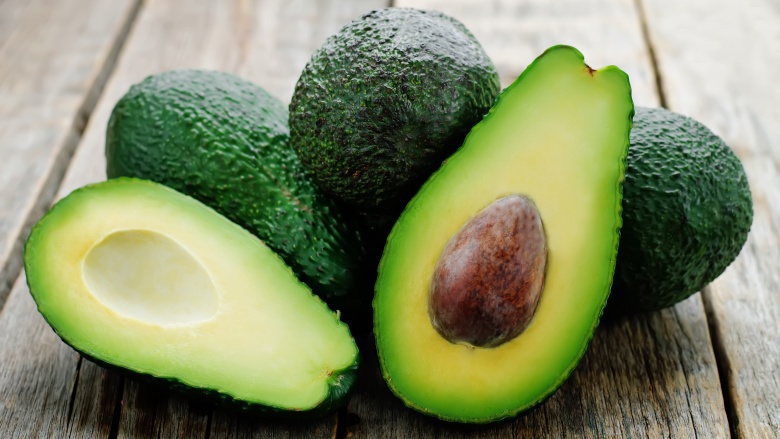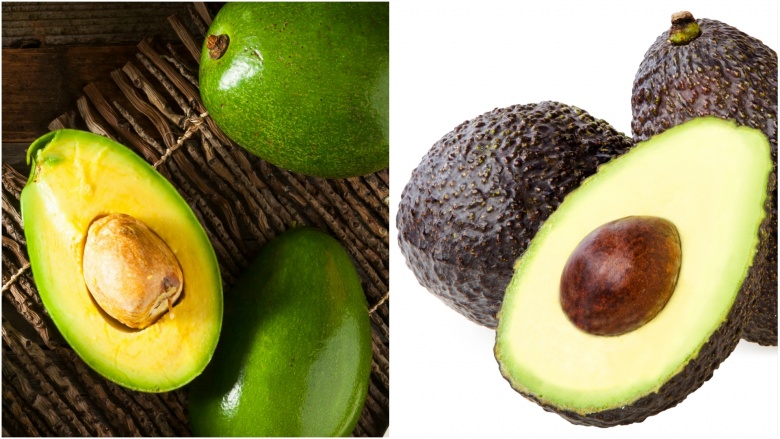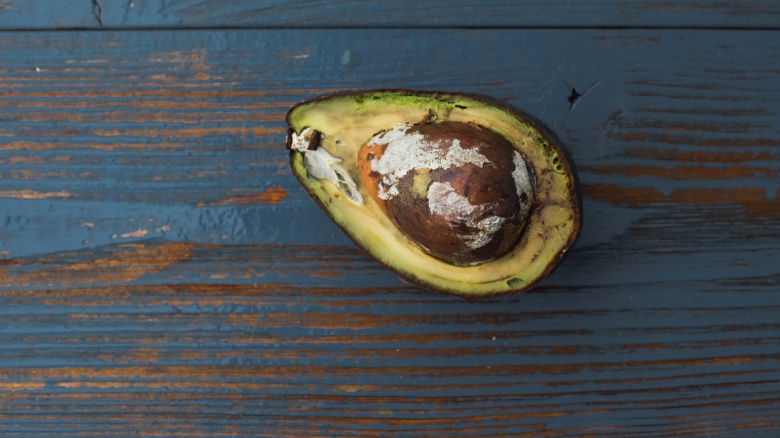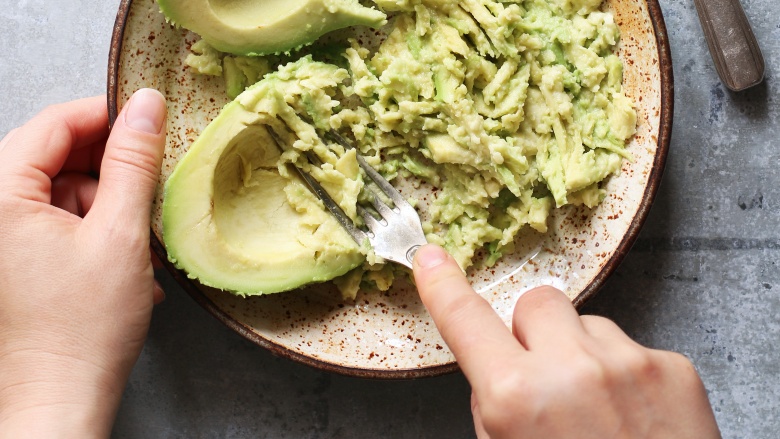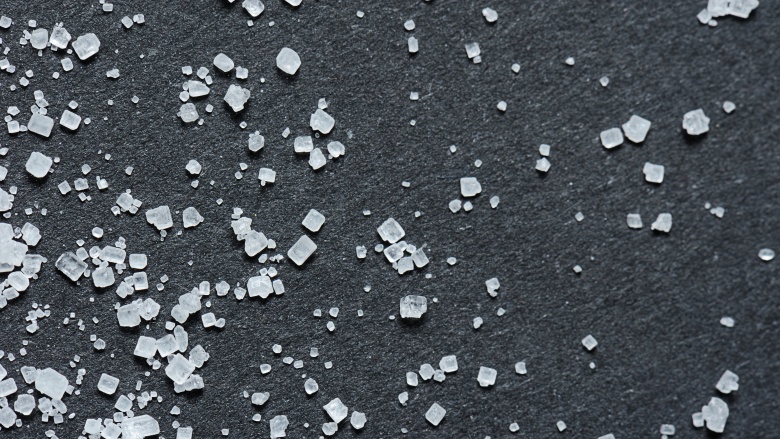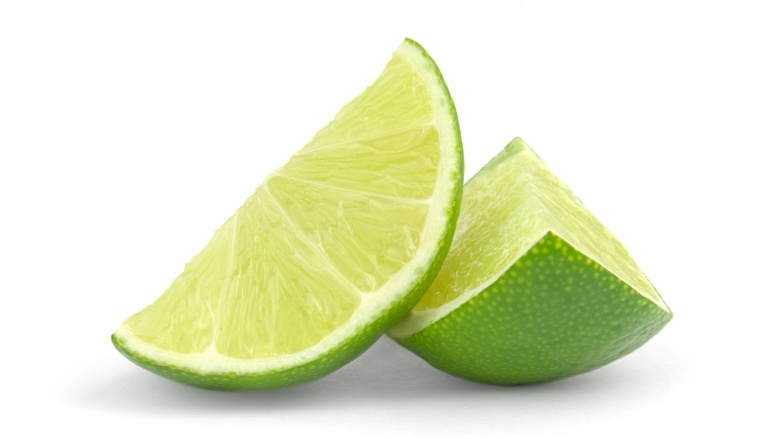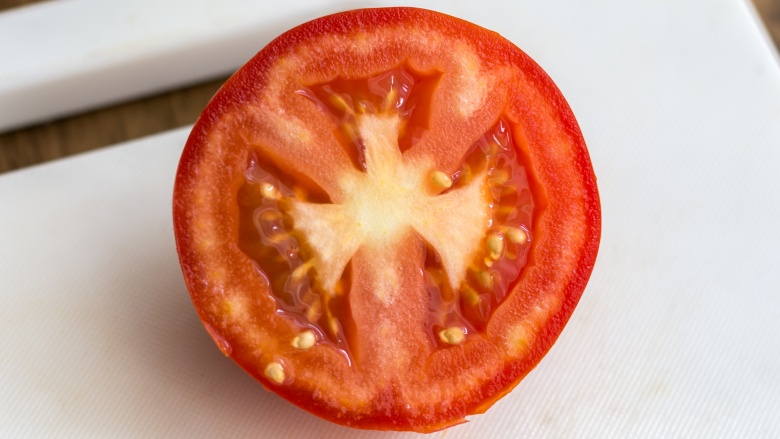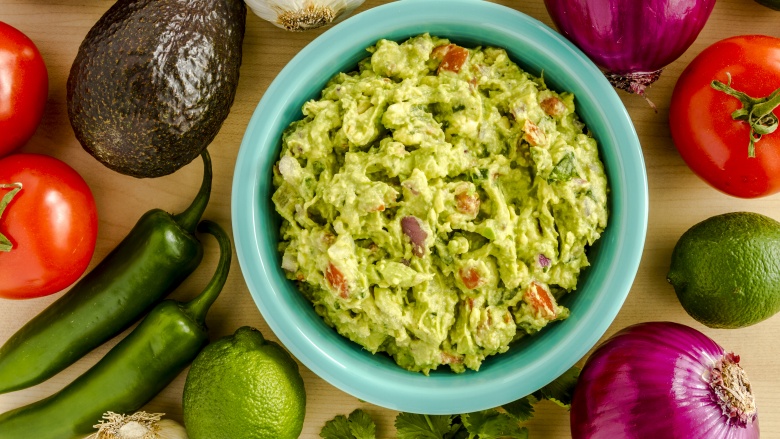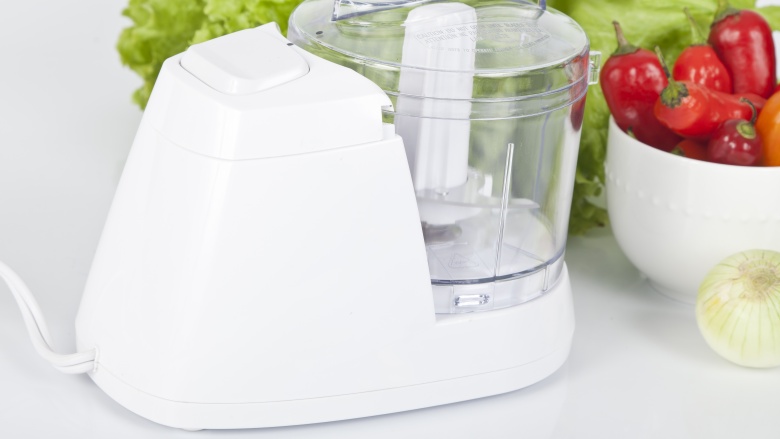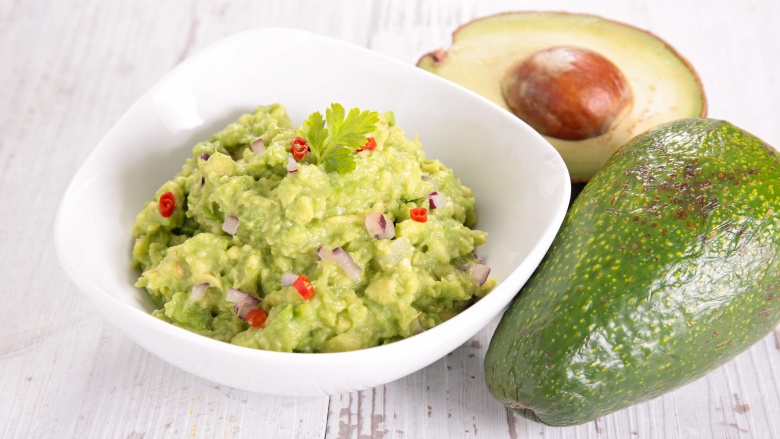10 Mistakes Everyone Makes With Guacamole
It may seem like the easiest dish in the world to create, but achieving creamy, zesty, and brightly-flavored guacamole requires at least some rules to be observed. Whether we're talking about ingredients or technique, the culprits for underwhelming guacamole are easy to pinpoint and even easier to avoid. Read on to ensure you never make these guacamole mistakes again.
Not choosing avocados that are at their best
Avoid using anything for guacamole other than perfectly ripe avocados. You know, the ones, with a little give when you press the skin but not all soft and mushy? If you're anything like me, you never seem to have these ripened ones on hand when you are dying for some guac. Your best bet is to assume you'll want to dip something in guacamole during a week's span and just have a few underripe avos at the ready. After a few days, they will ripen on their own when left out on the counter. To hasten the process, you can also put them inside a paper bag, fold it shut, and let it sit for a day or so. Your best guacamole deserves avocados at their peak.
Not using Hass avocados
Have you ever been subjected to watery guacamole? Chances are you have at some point, and it's simply no good. To avoid this drippy mess, don't even try to use Florida avocados (left in the photo above) for your guacamole — only Hass (right in the photo above) will do. Less watery than any other type of avocado, Hass avocados possess a little more fat and a few more calories than their counterpart. Their rich, concentrated flavor and smooth, creamy texture make them ideal for mashing into a luxurious dip.
Not removing brown parts from almost-perfect avocados
If you've ever worked so hard to pick out avocados at the store only to come home to cut up less-than-perfect ones, you're not alone. It's a tough feat to find perfectly green avocados. That said, you can still use these flawed ones for your guacamole, but be sure to cut away the brown blemishes so you're left with only the green parts. Even a tiny bit of browned avocado can taint the color of your entire dish when you mash it all up. To avoid unsavory-looking dip, snip off those unattractive bits. (You won't be able to taste the difference, but you will be able to see the difference.)
Mashing avocados too much and too slowly
When you're making guacamole, work quickly since exposed avocado flesh oxidizes when it comes in contact with air, turning it a brownish hue. Brown guac sounds kind of gross, if you ask me. You also want to avoid mashing too much since part of the charm of guacamole is the chunky texture that allows you to taste pieces of delectable avocado.
Not seasoning properly
It's pretty disappointing to eat bland guacamole when you undoubtedly had high expectations. Who doesn't love avocados? Add a generous amount of salt to your guacamole, then wait a few minutes before tasting and salting some more if needed. There's a time for delicate seasoning, and this just isn't one of them. The most memorable bowls of guacamole have been seasoned with a strong hand. Go big or go home and just eat a plain avocado instead.
Not using lime, or using lemon instead
Lemon juice is for avo toast and lime juice is for guacamole. While both of these favorite dishes requires acidity to balance out the richness of avocados, you should only use fresh lime juice for guac with authentic flavor. I didn't make the rules, but I'm happy to follow this one to a tee.
Not de-seeding tomatoes
One universally acceptable add-in for guac? Tomatoes! If you are adding them to yours, be sure to go the extra mile and remove the seeds. It sounds like an annoying task (and it is), but it ensures that your final result is something densely packed and not watery from tomato juices and seeds. Yuck.
Adding too many ingredients
President Obama was on to something when he publicly expressed his preference for classic guacamole. Why fix what's not broken? The star of guac is avocado, so be sure to let it shine. Loading up your version with everything and the kitchen sink seems innovative, but it just ends up being distracting, taking away from the decadent mouth feel of truly epic guacamole. My advice is to tread lightly when it comes to add-ins.
Using a food processor
You simply don't need to employ the work of a food processor for making guacamole. The Aztecs certainly didn't. Unless you want to eat some avocado soup, please mash your avocados using the back of a fork like a reasonable human being. Doing this manually lets you control how chunky your mash ends up. I like mine pretty chunky.
Not storing your guac properly
Guacamole should ideally be eaten the day it's made so it doesn't risk going brown. I usually polish mine off within the hour. If you've made too much and want to store some overnight, place your guac in a bowl with a tight-fitting lid. Next, using the back of a spoon, pack it down gently so there are no air bubbles. Add a small amount of room temperature water, about ¼ to ½ inch. Cover and store in the fridge for up to three days. To use, simply pour off the water and give the guacamole a vigorous stir. These small steps will help to keep the mixture green.
If you're not eating guacamole at least once a week, I sure hope these tips encourage you to incorporate it into your regular diet. At the very least, you can feel good about making your own, avoiding needless trips to the store for premade varieties.

